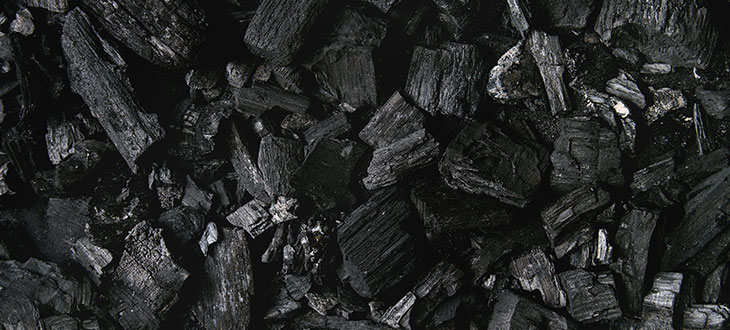Should I Use Charcoal Ash In Garden?
Should I use charcoal ash in the garden, or will it harm the plants? We will provide you with all the necessary information in this article.
Maybe you are a person who loves barbecues, or someone who uses a type of charcoal for the heating system, so you end up throwing large amounts of charcoal ash every year.
At the same time, you may have a garden and have heard that ash can be good for soil or plants, but you want to make sure that it will not do more harm than good.
Below, we will try to answer all your questions about using charcoal ash in the garden, when it is beneficial, how to use it and when it is better to dispose of it in the trash.
The short answer to this question is: “it depends.” Not all types of charcoal ashes are good for the soil and plants. In addition, there are certain situations when using ash can damage the fertility of the soil.
We will explain this answer in detail below.
Contents
What Is Charcoal Made Of?
To determine precisely whether charcoal ash is beneficial for the garden and plants, it is fundamental to know what charcoal is made of.
According to Sciencedirect.com:
Charcoal is produced by the incomplete combustion of plant or animal products. It is normally obtained from the burning of wood, peat, bones, cellulose, or other carbonaceous substances with little or insufficient air.
Sciencedirect.com
What we already understand from this statement is that there are several types of charcoals. Hence, not all of them may be suitable to be used in the garden.
Charcoal Types
Below we will list the most common types of charcoals, and a few words on how they are manufactured, according to Wikipedia:
- Common charcoal
- Sugar charcoal
- Activated charcoal
- Lump charcoal
- Japanese charcoal
- Pillow shaped briquettes
- Sawdust briquette charcoal
- Extruded charcoal
Common charcoal is made from coal, wood, peat, coconut shell, or petroleum.
Sugar charcoal is obtained from the carbonization of sugar.
Activated charcoal is similar to common charcoal but is produced primarily for medical use.
Lump charcoal is traditional charcoal made directly from hardwood material.
Japanese charcoal is a Japanese type of charcoal, traditionally used in cooking and produced mainly from oak.
Pillow-shaped briquettes are made by compressing charcoal, usually manufactured from sawdust and other wood by-products. These typically contain binders and other additives.
Sawdust briquette charcoal is created by compressing sawdust without binders or additives.
Extruded charcoal is made by extruding either raw ground wood or carbonized wood into logs without a binder.
Is Charcoal Ash Beneficial For Soil And Plants?
Yes and no.
As mentioned above, there are several different types of charcoals. The ash resulting from their burning is not always a beneficial ingredient for improving soil quality and for use in agriculture.
Some types of charcoals contain, in addition to organic materials, heavy metals and dangerous additives. These can be very toxic to plants and contaminate the soil. While some of these substances might be destroyed after the charcoal burns, some will persist in the ash.
In addition, it is known that ash can increase the soil’s pH. This may or may not be a benefit, depending on the type of plants you intend to grow.
What Charcoal Ash To Use In Gardening?
Besides the wood ash, the ash resulting after the burn of natural lump charcoal is generally considered safe to use in the garden. However, make sure that it is stated on the package that it is 100% natural and doesn’t contain any added additives or chemicals.
Other types of charcoals, such as briquettes, contain binders, lighter fluid, and additives that are harmful to the soil, plants, and environment. Hence, the ash of charcoal briquettes should never be discharged in the garden.
Different types of ashes resulting from wood-based charcoals may also be suitable, as long as they don’t contain any added chemicals.
Pros And Cons Of Charcoal Ash In Gardening
Charcoal made out of wood consists mainly of carbon. Therefore, the ash resulting after its burning also carries high levels of this element.
Carbon is the main component of soil organic matter and helps give soil its water-retention capacity, its structure, and its fertility.
e360.yale.edu
Therefore, carbon is an important element for soil fertility. It is also an essential element in composting.
Besides, ash is also a good source of macro and micronutrients like calcium, potassium, magnesium, and phosphorus. In terms of commercial fertilizer, the N-P-K ratio of average wood ash is about 0-1-3. (source)
However, adding too much ash or too frequently will make the soil too alkaline. Thus, for acid-loving plants, this will be an issue.
Another benefit of using ash in agriculture is that it can also act as a pesticide. Therefore, many believe that ash has the ability to repel various types of insects and plant pests.
How To Use Charcoal Ash In The Garden
Opinions are divided when it comes to the best way of applying ash in gardening.
Many recommend sprinkling the ash lightly on the surface of the soil in winter or fall. This gives the ash enough time to react with the soil before the spring crop.
Another way to use ash is by adding it to your compost pile. Of course, even in this case, the amount of ash added does not have to be very large as it can negatively influence the compost quality.
Final Word
Adding charcoal ash to your garden can be beneficial for the soil.
Nevertheless, you must only use the ash resulting from charcoal types manufactured from sawdust and other wood by-products that don’t include additives, lighter fluid, or any added substances.
Also, any ash type will increase the soils’ pH level if added in large amounts. So, you don’t want to apply ash to places where you grow plants that thrive in soils with a low pH.

